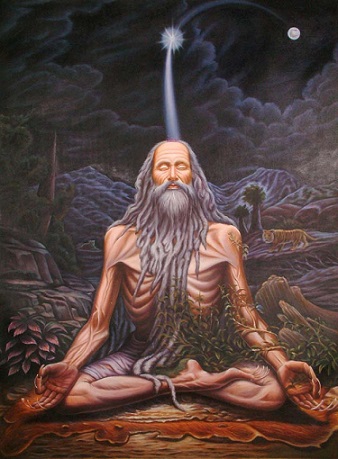In the past, many believed India to be the land of fakirs, yogis, snakes and miracles. One of the most famous of tricks conjured by fakirs was the famous Indian Rope Trick. A fakir would show a coiled rope to the public which would slowly rise as he would play a been (Indian wind instrument made from gourds) and in a short while the rope would be stiff and hard like a pole. Upon his order his assistant would then start climbing that rope and as he would rise higher he would slowly vanish into thin air. As the audience applauds the rope would fall back to its original position and the assistant would re-appear. This rope-trick is so famous that numerous people have claimed that they have personally seen it and it was especially popular with Western writers in the 19th century.
But what we are about to discuss now is such deep magic that it would put even the rope trick to shame? In the Srimad -Bhagavatam(11th Canto) Uddhava asks Lord Krishnaabout ‘yoga siddhis’ or material perfections achieved by a yogi. It should be noted that both in the Bhagavad Gita and in the Srimad -Bhagavatam Lord Krishna is sometimes addressed as Yogeswara, or the Supreme Master of Yoga-siddhis. Upon asked by Uddhava, Krishna lists eight most important siddhis as:
Anima-siddhi: This enables the yogi to become smaller than the smallest.
Laghima-siddhi: A yogi having laghima siddhi can become lighter than the lightest or practically weightless.
Mahima-siddhi: Mahima siddhi gives the yogi to become greater than the greatest.
Prapti-siddhi: With prapti-siddhi any desirable object can be obtained.
Isitva-siddhi: Isitva-siddhi enables the yogi to manipulate the laws of material nature.
Vasitva-siddhi: A yogi having mastered vasitva-siddhi is unhampered even by the three modes of material nature.
Prakamya-siddhi: This siddhi gives the yogi the power to enjoy any desirable object.
Kamavasayita-siddhi: One who has mastered this siddhi can obtain anything from anywhere to the highest possible limit.

What is more interesting is that after describing these siddhis Lord Krishna cautions that one seriously traversing the path of bhakti should carefully avoid these siddhis as they are nothing more than irritating obstacles on the path of self-realization. Since Krishna is the original master and the fountainhead of all these perfections His devotees do not need to pursue them separately. If the need arises the Lord will do the needful.
 Why does Krishna call them obstacles?
Why does Krishna call them obstacles?
Patanjali, the great exponent of the path of yoga, has stated that to achieve siddhis there are many options:
one can be a siddha by birth, or one can achieve siddhis with the help of herbs, austerities and by meditating on a mantra. For example, a fish can swim in water and a sparrow can fly in the air — these perfections are available simply by being born in that particular species of life.
I am reminded of the story of a village boy who went to perform austerities in the Himalayas and returned after twelve long years. He had finally mastered the art of walking on water. He was really desperate to show his skill in front of his whole village. Upon entering the village he saw the wise old man and decided to show him his siddhi. The old man saw his trick and said that it was worth five paisa. “What” retorted the young fellow, “All my efforts are worth only five paisa?” The old man took a pause and said, “Look here, the boatman gladly takes me across the river for five paisa. But you can save that amount.”

